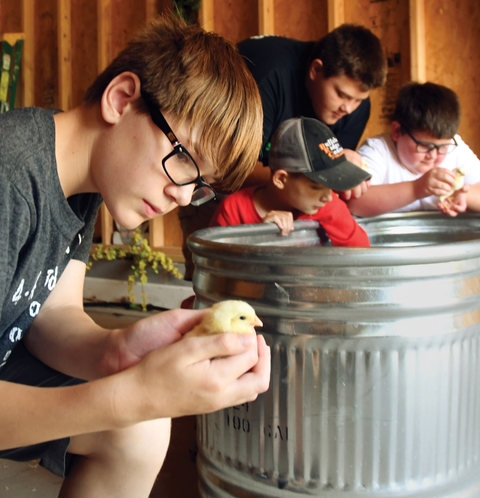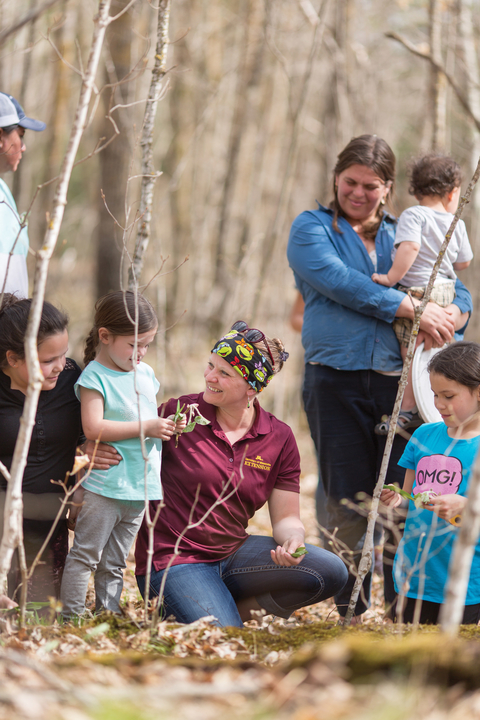Today nearly half of all Minnesota’s 65,000 4-H participants live in suburbs and cities, growing stronger right along with rural and tribal 4-H youth.
Urban youth learn about growing food and meet people who live on farms. Rural youth learn photography and video skills and meet people who live in cities. Kids raised in the suburbs and in Indian Country discover projects that mean something to them. All of them learn that there are many ways to be a Minnesotan, together in 4-H.
Youth teaching youth in the suburbs
“When I was a kid, my friends’ parents would come into our classroom and teach us cool things,” says Ermias Yebyo, 4-H teen teacher in Dakota County. Now he’s doing what others have modeled for him, but at a much younger age.
Odalys Martinez, also from South St. Paul in Dakota County, decided to major in elementary education after 4-H gave her the chance to teach for two years before she had even graduated from high school.
In Anoka, Dakota, Scott and Washington county suburbs, high schoolers in Extension’s 4-H Youth Teaching Youth program are trained to teach elementary and middle schoolers about nutrition, disease prevention and how to be more active. Being teenagers themselves, Martinez and Yebyo can really relate to those they teach.
“When encouraged by a teenage teacher to eat healthy foods, even the least enthusiastic younger kids wanted seconds,” says Extension 4-H program coordinator Kirsten Pederson. “That’s the magic of teenagers.”
Growing professionally in the city
Alexis Abernethy, 14, just spent her second summer working at the Lake Superior Railroad Museum in downtown Duluth, St. Louis County. “It gave me a chance to experience what a real job is like,” she says.
Designed to help youth develop workplace and career-readiness skills, this urban 4-H program places 60 kids in 15 sites, including Boys and Girls Clubs, YMCA camps, and other nonprofits.
Students—often new to 4-H—volunteer for 25 to 50 hours over the summer at organizations that fit their interests.
“Many participants continue volunteering after the program is over,” says Extension 4-H program coordinator Katie Ecklund. “They stay in touch with mentors, too, who often serve as references for job or college applications.”
Growing responsibility in Greater Minnesota
More than 80 chickens roam the Jenson family’s Fairmont farm in southwestern Minnesota’s Martin County.
Jorvik Jenson is one of more than 300 youth who join the 4-H Broiler Derby each year. Any 4-H’er with a proper shelter and the intention to exhibit chickens at the county fair is given 10 Cornish game chicks and some starter feed free of charge. From there, it’s the child’s responsibility to feed and raise the chickens.
This is the third year in the Broiler Derby for the 12- year-old, who has thus far lost only one chick. “Cornish chickens grow fast and have plenty of meat on them,” he says. “After the fair we sell some meat and give some away to family and friends.” Jensen persuaded his sister, age 14, to get involved too.
As the Jensens grow up, they will join the other more experienced youth in leading educational workshops about poultry. Says Extension 4-H program coordinator Kristie Gaalswyk-Pomerenke, “In 4-H, the next generation slowly grows into and then takes over leadership.”
Strengthening families in White Earth
“Family-friendly ways to enjoy healthy activities” is how one participant sums up the White Earth Tribal 4-H program.
In collaboration with the White Earth Tribal and Community College, Extension 4-H holds two-day mentorship events at the Rediscovery Center at White Earth Lake. The seasonal gatherings connect youth with elders and cultural practices, like maple syruping in the spring and ice fishing or a game of snow snakes in the winter. Seventy people, youth and their families, typically attend.
Seasonal family gatherings also provide an opportunity for the White Earth community to discuss and share ideas about how they would like to see 4-H take shape there. Says Dana Trickey, 4-H program coordinator, “It’s key to have the community involved in building and growing the program around the kids’ and families’ interests.”





